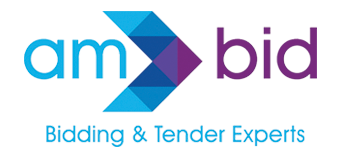More often than not a tender quality submis sion will include a written methodology to demonstrate your approach for specific client objectives. These method-based questions are cross-sector and routinely include subjects like project management, programme management, change management and quality management. They also normally command the highest marks within a given quality submission and we commonly see them being worth up to 30% of the overall quality mark.
sion will include a written methodology to demonstrate your approach for specific client objectives. These method-based questions are cross-sector and routinely include subjects like project management, programme management, change management and quality management. They also normally command the highest marks within a given quality submission and we commonly see them being worth up to 30% of the overall quality mark.
Following the 5 tips below will help you to provide a clear, compelling methodology which will convey the benefits of your approach to your clients:
- Identify and talk about your clients’ needs – it is a common mistake to launch into how great you are, DON’T, talk about your clients’ needs first. Set the scene clearly outlining your interpretation of their needs, then succinctly describe how you will deliver them in the context of the question, for example if the methodology relates to how you will manage the project programme, talk about their key dates and how you will meet (or exceed these).
- Know your solution – an absolute must before putting pen to paper, or finger to keypad, you must know your solution otherwise you run the risk of writing a methodology that rambles and does not demonstrate the benefit of your approach. To maximise tender stage efficiency consider holding solution workshops in advance of the bid phase to establish your outline solution. Knowing this in advance will also allow you to step back from the nuts and bolts during the tender stage and really assess your offering for benefits to the client.
- Clearly state the benefits your solution provides – do not fall into the common trap of teaching your grandparents to suck eggs. Your client will not want to know that component A gets attached to component B using Tool X which delivers function Y. They will want to know if the combination of these elements provides them with a solution that is better, cheaper, faster or safer than your competitors and what this means for them in the context of the project. Make sure you identify this up front in your methodology, and if specific methods are asked for provide this after telling them the key information.
- Provide evidence in the context of the question – the tender stage is all about looking forward. Whilst the client wants to hear about your bespoke solution, they quite often also need to know that this is grounded in fact. So, when you are asked to demonstrate your approach this means tell the client how and prove that this has worked for other successful projects. A client does not want to be the test subject for an unproven solution, they need to know their financial decisions are based in fact and that the project will be delivered to budget.
- Evaluation criteria hot buttons – You should also consider the evaluation criteria when collating and preparing evidence. Common elements such as Added Value or Innovation are often included in the evaluation criteria. Top marks can be gained by providing robust evidence on these common themes. Test your evidence with the “so what?” temperature check. Write it, read it and if you are left asking so what then it needs more work.
So, for your next tender make sure you follow these 5 tips and identify your clients’ needs, your solution, evaluate and state your benefits and provide compelling evidence that clearly demonstrates your approach in the context of the evaluation criteria.
